ePostcard #166: Ocean Sleepers
Photo Credits: All photographs are courtesy of Audrey DeLella Benedict unless otherwise credited.
OCEAN SLEEPERS
Trying to understand—fathoming—the lives of cetaceans (whales, dophins and porpoises) deepens our connection with the natural world. Their remarkable physiological and behavioral adaptations continue to amaze and challenge scientists who endeavor to resolve the myriad questions that arise concerning cetacean survival in a rapidly changing world. I introduced this series on restorative sleep patterns in aquatic mammals because of my own experiences with humpback whales in Alaskan waters and my encounters with gray whales in the calving lagoons along the western coastline of Mexico’s Baja Peninsula. Something about seeing the ancient intelligence reflected in the eyes of a mother gray whale and being showered with her exhalation of misty droplets changed my perspective and my priorities as a writer. With Ocean Sleepers, I want to continue our exploration of sleep patterns in cetaceans. Take a deep breath and let’s dive in for an introduction to just a few of the main characters.
The Order Cetacea—whales, dolphins and porpoises—evolved about 50 million years ago. You may be surprised to learn, as I was, that cetaceans share a common terrestrial ancestor with hippopotamuses. The two modern orders of Cetacea—Mysticeti (baleen whales) and Odontoceti (toothed whales)—are thought to have separated from each other at least 30 million years ago. The Mysticeti, or baleen whales, have two blowholes and, instead of teeth, have a series of plates that grow down from the roof of the whale’s mouth. Baleen is made of keratin, a material similar to human fingernails and resembles the frayed teeth of a comb. There are 15 species of baleen whales, including the blue whale, the largest animal on Earth, as well as the gray, humpback, right, bowhead, minke and sei. Baleen whales have a cosmopolitan distribution and can be found in every ocean basin on Earth.
The Odontoceti, or toothed whales, form an extraordinarily large group of aquatic mammals that includes all toothed whales (sperm whales, belugas, narwhals and beaked whales), dolphins and porpoises. The toothed whales range in size from the smallest harbor porpoise to the sperm whale. Unlike the baleen whales, the toothed whales have jaws with teeth and a single blowhole. They are further distinguished from each other by the shape of their teeth: porpoises (spade-like teeth) and dolphins (round teeth). The killer whale (or orca) is a toothed whale in the dolphin family. The sperm whale is the only odontocete that doesn’t align neatly with either the dolphin or porpoise family.
SLEEP PATTERNS IN CETACEANS
Cetaceans evolved over millions of years in a challenging aquatic environment, where relatively low ocean temperatures were the norm for aquatic mammals. Whale biologists suggest that three life-sustaining factors have influenced the evolution of the patterns of sleep we see in whales, dolphins and porpoises: (1) the need to come to the water surface to breathe when resting or sleeping, (2) more efficient monitoring of their physical environment and predator avoidance and (3) the need for continuous thermogenesis. Unihemispheric sleep—the amazing ability that all marine mammals possess that allows them to alternate the two hemispheres of the brain that undergo restorative sleep—has evolved as a neurophysiological mechanism that enables cetaceans to surface at species-specific intervals to breathe without awakening, to maintain optimal body temperature through swim-generated muscle thermogenesis, and to remain vigilant in avoiding hazards or predators.
Among cetaceans, the absence or reduction of rapid eye movement sleep (REM) when sleeping at the surface is adaptive primarily because it minimizes the time when the animal is less responsive and most vulnerable to predation—or when it minimizes the time when a cetacean is unable to effectively regulate its body temperature. The next time you are out observing whales, dolphins or porpoises and their behavior suggests that they might be resting/sleeping at the surface, use your binoculars to check for evidence of unihemispheric sleep. If you see that the left eye is open, for example, the right half of the brain will be in restorative sleep, and vice versa. Sometimes both eyes may be closed, especially where risks from predators are rare or mitigated by other factors. When marine mammals sleep and swim at the same time, they are in a state similar to napping. Young whales and dolphins actually rest, eat and sleep while their mother swims, towing them along in her slipstream (echelon swimming). If environmental conditions permit, the mother will also sleep while swimming.
To avoid drowning during sleep, it is also crucial that water-dwelling mammals maintain control of their blowhole. The blowhole is a flap of skin that is thought to open and close under the voluntary control of the animal. Most researchers believe that in order to breathe, a cetacean must be conscious and alert enough to recognize that its blowhole is at the surface. It is actually rare for a marine mammal to “drown,” as they won’t inhale underwater; but they do suffocate from a lack of air. Being born underwater can cause problems for newborn whale and dolphin calves. It is the touch of air on the skin which triggers that first, crucial breath. Necropsies of newborns sometimes show that they never reached the surface to take their first breath. Suffocation can also occur when an adult or juvenile cetacean is caught in a fishing net or struck by a vessel and unable to reach the surface.
Sperm Whales
Photo Credits (above and below): Courtesy of Franco Banfi/Solent News & Photo Agency (2017). Sperm whales asleep in the vertical position. Swiss photographer Franco Banfi was free-diving (without scuba gear) off the coast of Dominica (Caribbean Ocean) and spotted this group of six sperm whales sleeping vertically, with tails pointed downwards and heads angled towards the surface, about 65 feet beneath the surface. Capturing images of whales underwater can be especially challenging, so you can imagine the magic of the moment when the award-winning underwater photographer captured this image. When I came across this image, I knew that I wanted to share it with my readers and learn more about sperm whales.
A study by Miller et al. in 2008 showed that sperm whales mainly sleep in this vertical posture during the day, with both eyes closed. This position is rare however and appears to be mostly for short naps. In another study, using data-collecting tags suction-cupped to 59 sperm whales, researchers from the University of St. Andrews and the University of Tokyo measured the periods of time the whales spent inactive. Their observations revealed that sperm whales entered these sleeping states by first descending head-first to a depth several times that of their bodies, then passively turning heads-up and drifting closer to the surface. Apparently, sperm whales around the world practice this vertical sleeping posture — but infrequently, spending only about 7 percent of their time asleep, which is less than that of any other mammal.
humpback whales
HUMPBACK WHALE PHOTOS BY JASMINE CAREY
Photo Credits (3): All three of the images above are courtesy of Jasmine Carey, the Brisbane-based winner of the prestigious HIPA international photography award and were posted in the ABC Sunshine Coast News in 2020. Jasmine Carey received the top prize for the first of the three photos above, which shows a humpback whale and her baby sleeping in a vertical position in the water off the Kingdom of Tonga in the South Pacific. Look closely at photo #2 in this series and you will see that a young humpback calf is sleeping snugly between two adult whales in waters off Tonga.
blue whales
Photo Credits: Both aerial images of sleeping blue whales are courtesy of NOAA Fisheries.
Why did some of the baleen whales, such as the blue, fin, and sei, become so huge? Evolutionary biologists believe that when baleen whales first appeared, around 35 million years ago, they were already big, and that they only got bigger within the last 4.5 million years. Some scientists suggest that the baleen super giants were the last act in an Ice Age-related era of profound climate change. Bigger whales could store more fat, and their large bodies would have allowed them to more efficiently migrate in search of the best feeding grounds. Baleen whales are beautifully adapted to hunt down sparse but concentrated prey, and would have easily monopolized the newly available food resources of a freeze-thaw planet. Their huge size, however, also allows them to survive for long stretches without encountering any food. These whales evolved a foraging technique called lunge-feeding, where the whale accelerates into a shoal of prey, open their ballooning mouths, and engulf huge volumes of prey-rich water. A blue whale, for example, can take in 120 tons of water and around half a million calories of krill in a single mouthful.
killer whales
We know that dolphins and beluga whales sleep by shutting down one hemisphere of their brain at a time. Because killer whales are odontocetes and physiologically similar to these species, we might assume that they sleep in the same way. If this is the case, while half of the killer whale’s brain catches up on sleep, the other half controls its breathing. What’s more, one eye remains open (on the “awake” side of the brain”) while the other stays closed. I’ve included several of my photographs below of pods of killer whales whose behavior suggested to me that they were in unihemispheric slow wave sleep.
Killer whale calves can’t just swim around on their own, and they need their mother by their side as a constant presence. In the photo below, a young killer whale and its mother swim close together in what is known as an “echelon formation.” The calf eats, rests and sleeps while being towed along in its mother’s slipstream. While this arrangement is perfect for the calf, it means no sleep for mother—for a month. Whale biologists have discovered that killer whale mothers and calves are constantly on the move during the first month or so after a calf’s birth, skipping sleep and remaining mobile 24 hours a day. All that activity helps regulate the calf’s body temperature (their blubbery insulation isn’t fully developed yet), keeps them afloat, and keeps them safe from predators. This is likely linked to the same reason humpback whales sleep for a short amount of time, as the calves do not have the blubber to maintain optimal body temperature during a prolonged resting period. The team found that after several months the killer whale calves were resting a similar amount to the adults.
COMMON BOTTLENOSE DOLPHIN
I photographed these common bottlenose dolphins (above) at San Ignacio Lagoon. Dolphins have a bulbous head and a clearly-defined “beak,” or long nose that sticks out from their face. Porpoises, on the other hand, usually have a rounder face without the pronounced beak. If you can’t get a good look at the head, take a peek at the fin. Dolphins have curved dorsal fins, whereas porpoises have dorsal fins that are more triangular in shape. Dolphins and porpoises are both highly intelligent, but dolphins are typically more curious around humans than porpoises are. Dolphins and porpoises both use use echolocation to sense what is around them, to hunt for prey and to find their peers. Check out the sounds that common bottlenose dolphins make on the NOAA video that I’ve included below.
Many dolphins tag along with slow-swimming group members while in unihemisphere slow wave sleepsleep. By “sleepwalking in the sea,” cetaceans can maintain body heat and stay with their group while sleeping. Dolphins close the left eye when the right half of the brain sleeps, and vice versa, alternating which half of the brain is sleeping so that they can rest without losing consciousness. They will also often lie motionless at the surface, breathing regularly, or swim slowly close to the surface.
HARBOR PORPOISES
Harbor porpoises are more closely related to narwhals and belugas than to the true dolphins. There are eight living species of porpoise, all among the smallest of the toothed whales. In porpoises, like other cetaceans, the two brain hemispheres take turns alternating between unihemispheric slow wave sleep and being awake. While one hemisphere displays slow waves, the other displays wake patterns on an electroencephalogram, and researchers suggest that the brainstem controls this activity. Dolphins and porpoises both employ a minimal amount of suppressed REM sleep, but porpoises seem to inhibit REM sleep more than most aquatic mammals, an adaptation that may prevent their losing muscle tone and thus decrease the risk of drowning or suffering from hypothermia while swimming. Both of my harbor porpoise photos show what unihemisphere slow wave sleep looks like. Note the slow movement and that the mother and calf are sleeping/moving together, and that their blowholes are exposed at the surface
To help build global awareness, we would appreciate it if you would share this post with your friends and colleagues. Please choose one of the options below which includes email and print! Thank you.

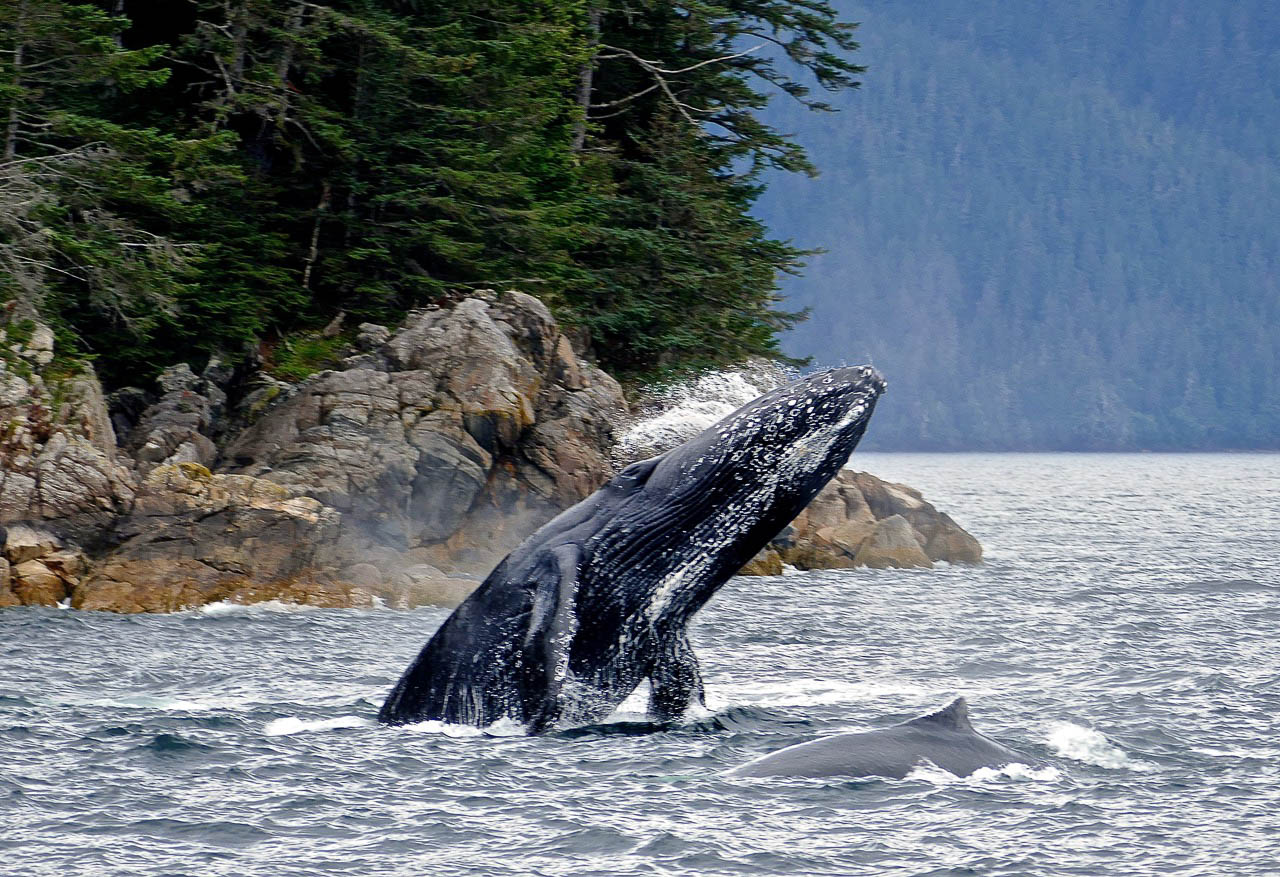
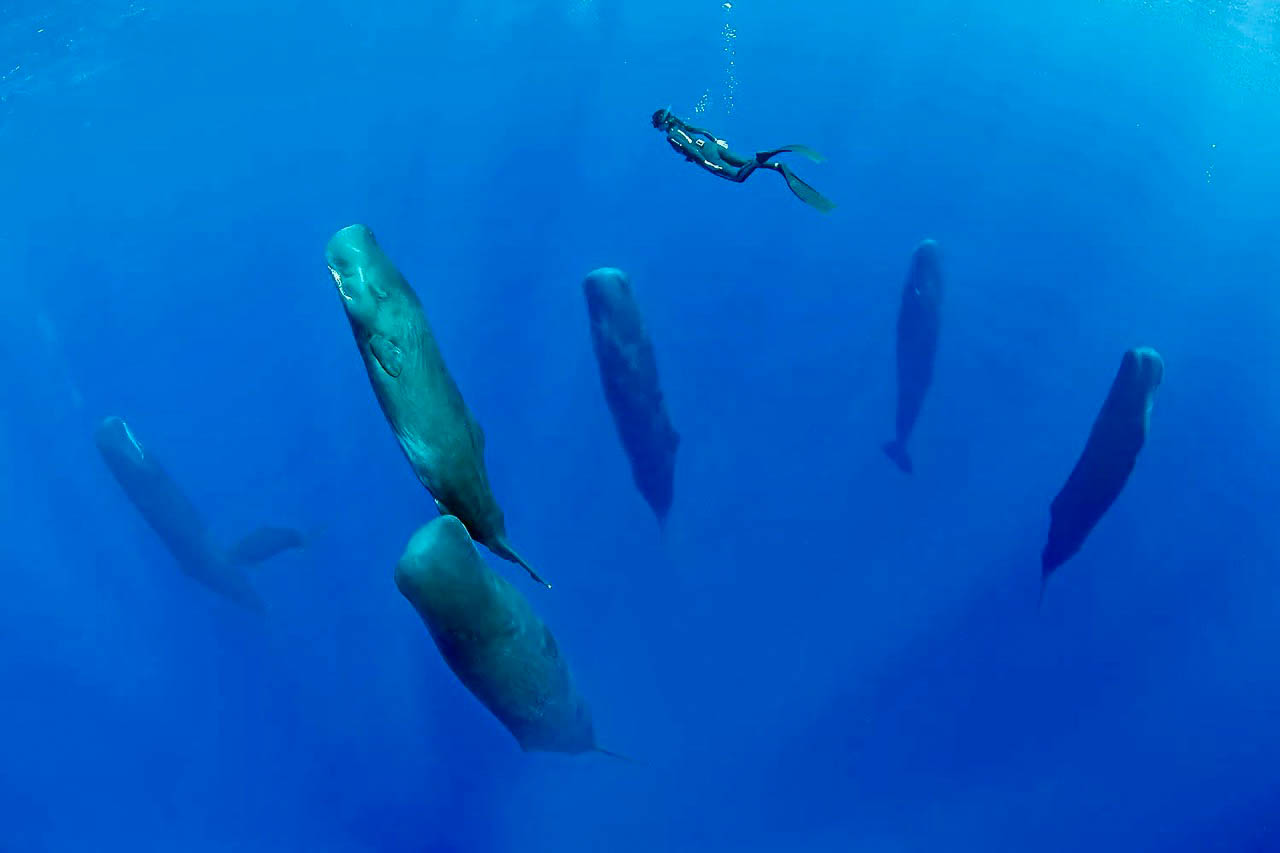
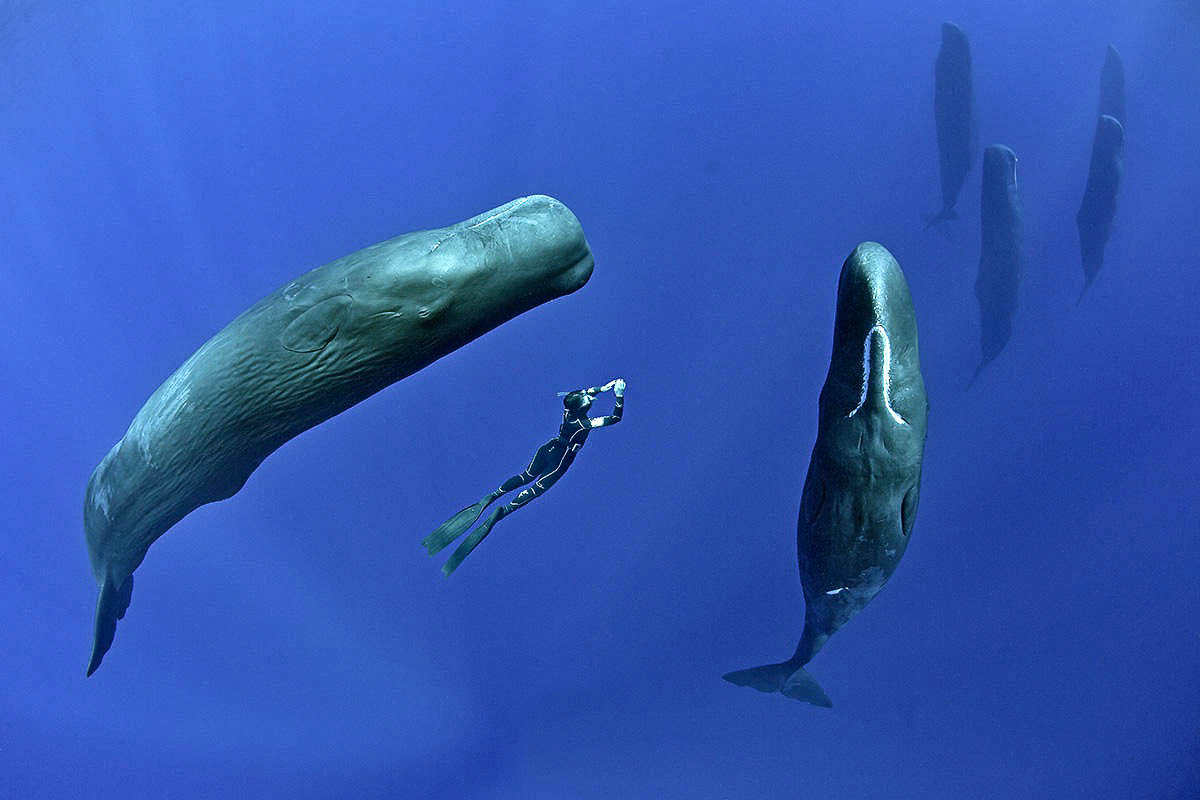
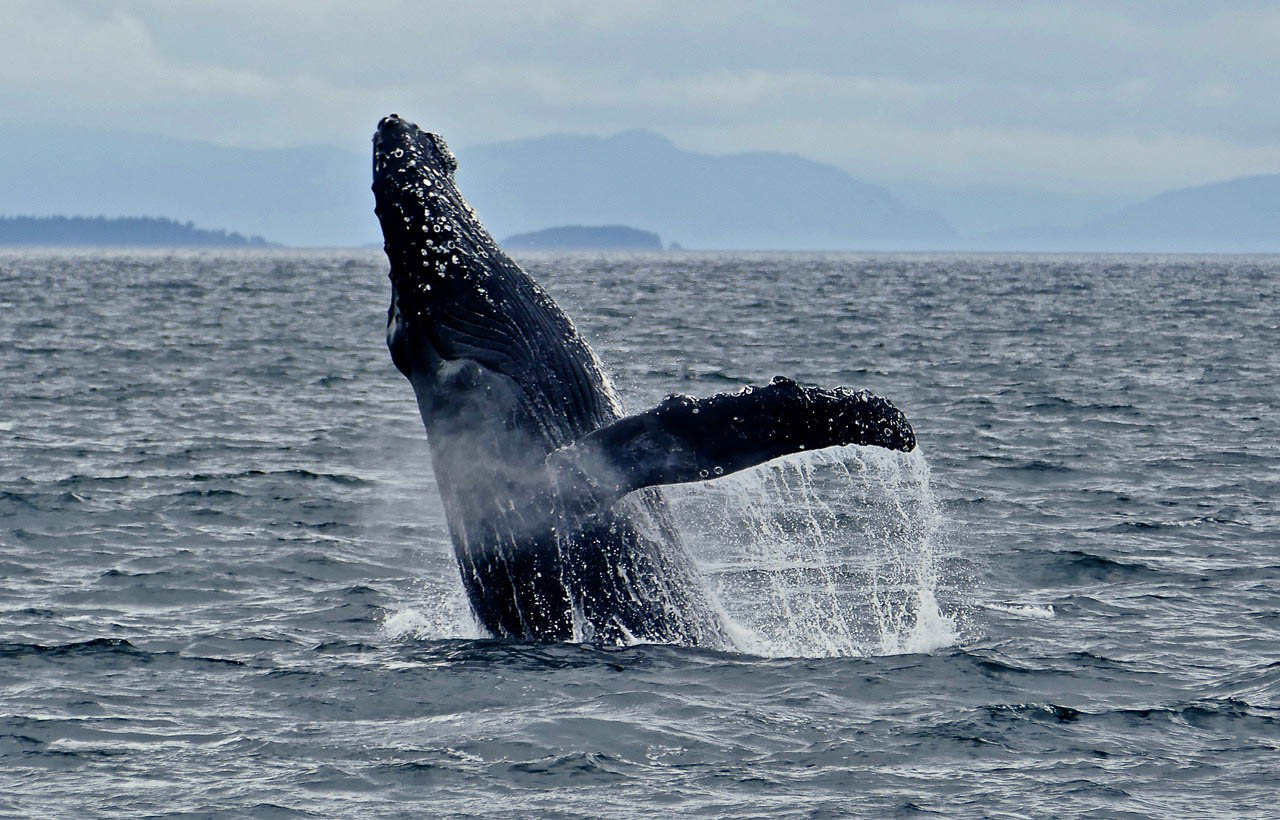
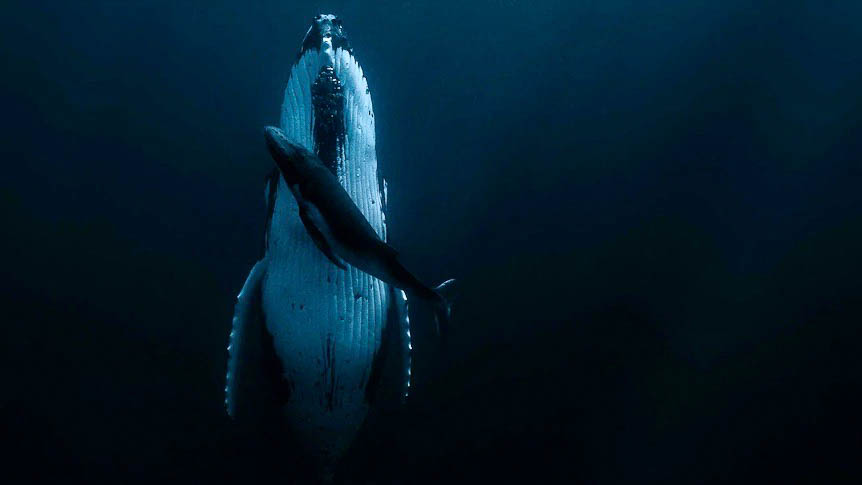

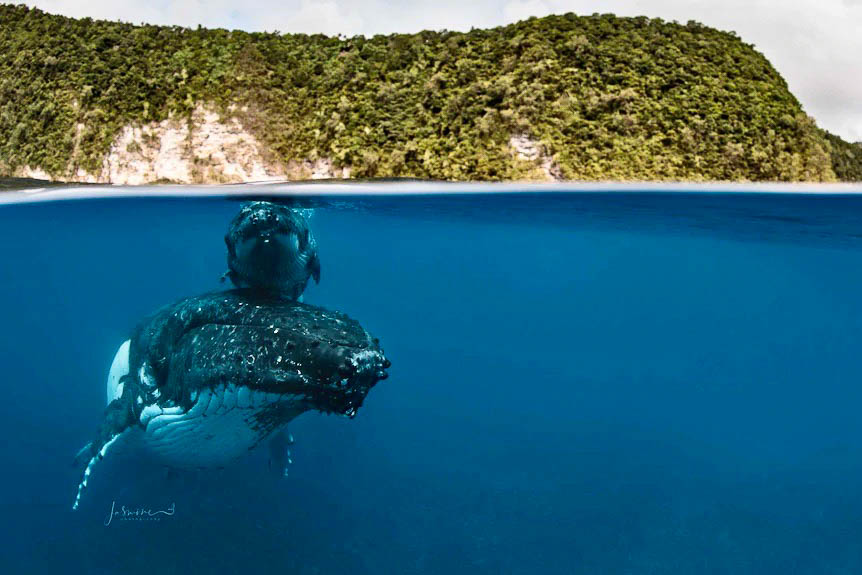
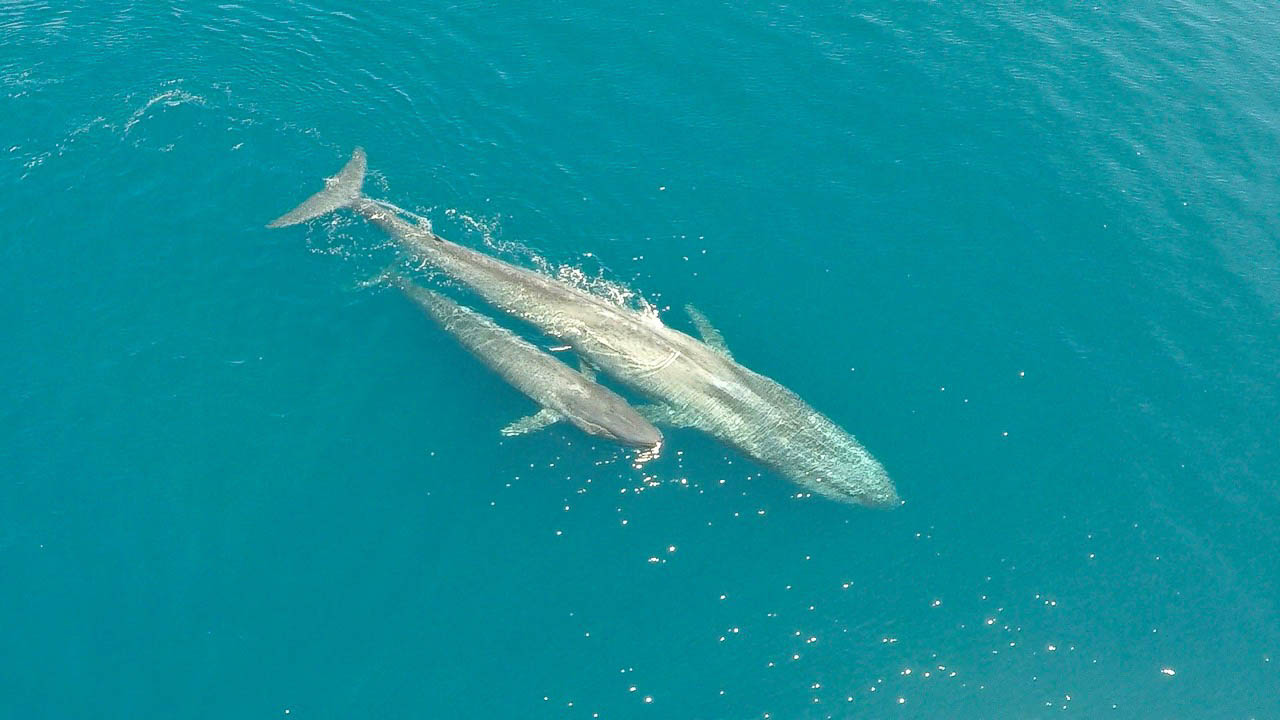
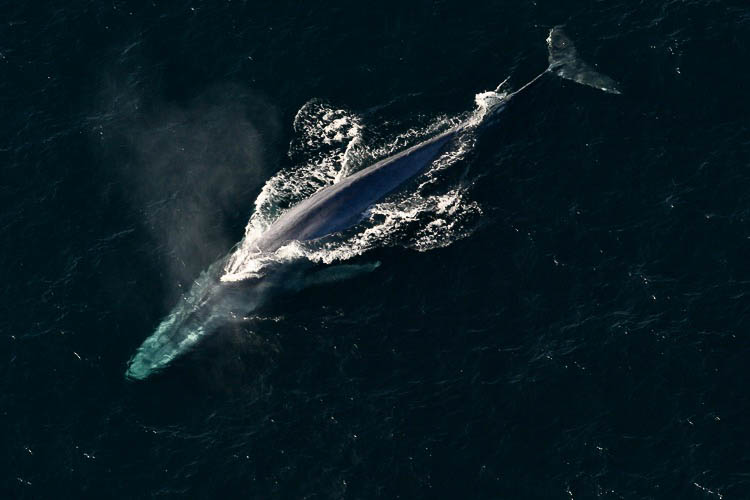
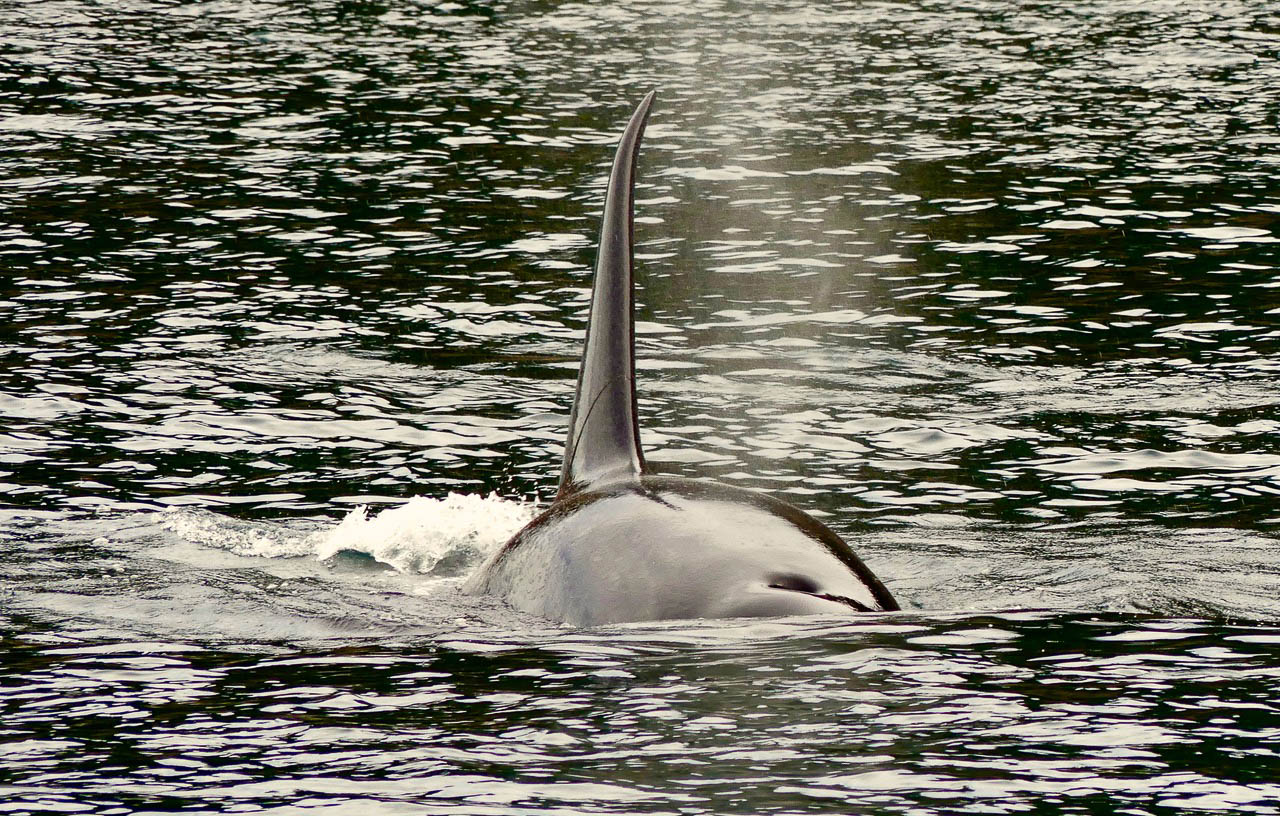
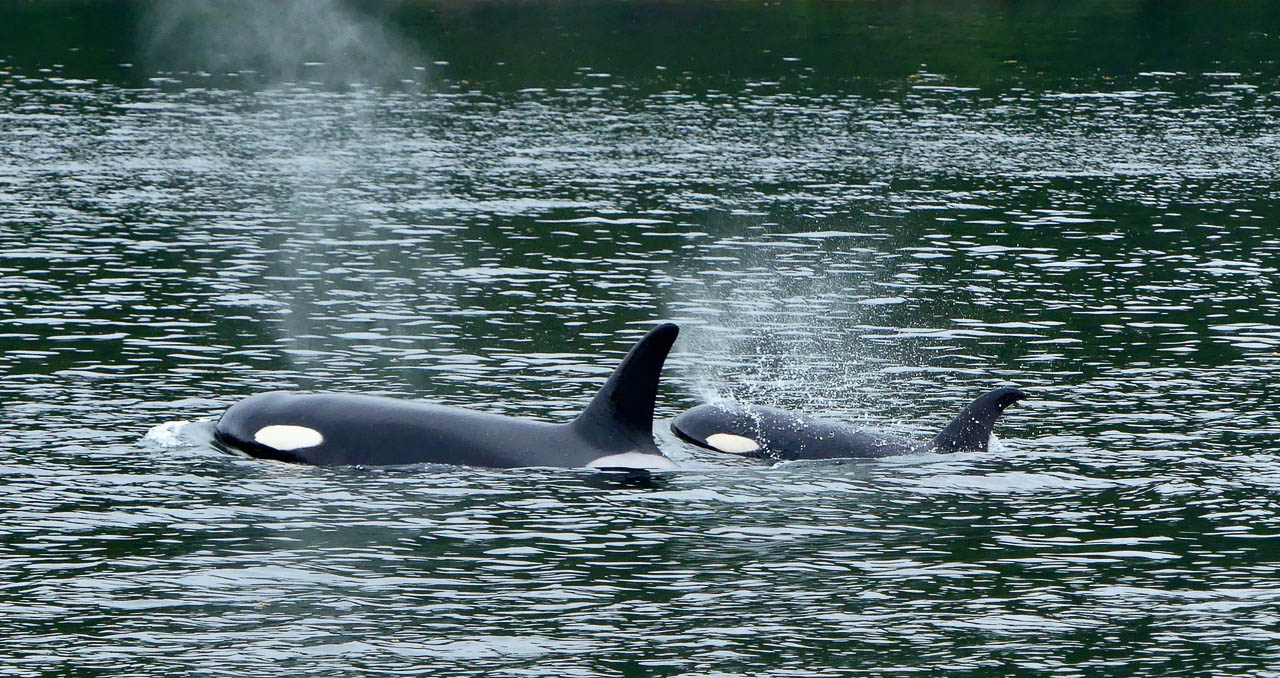
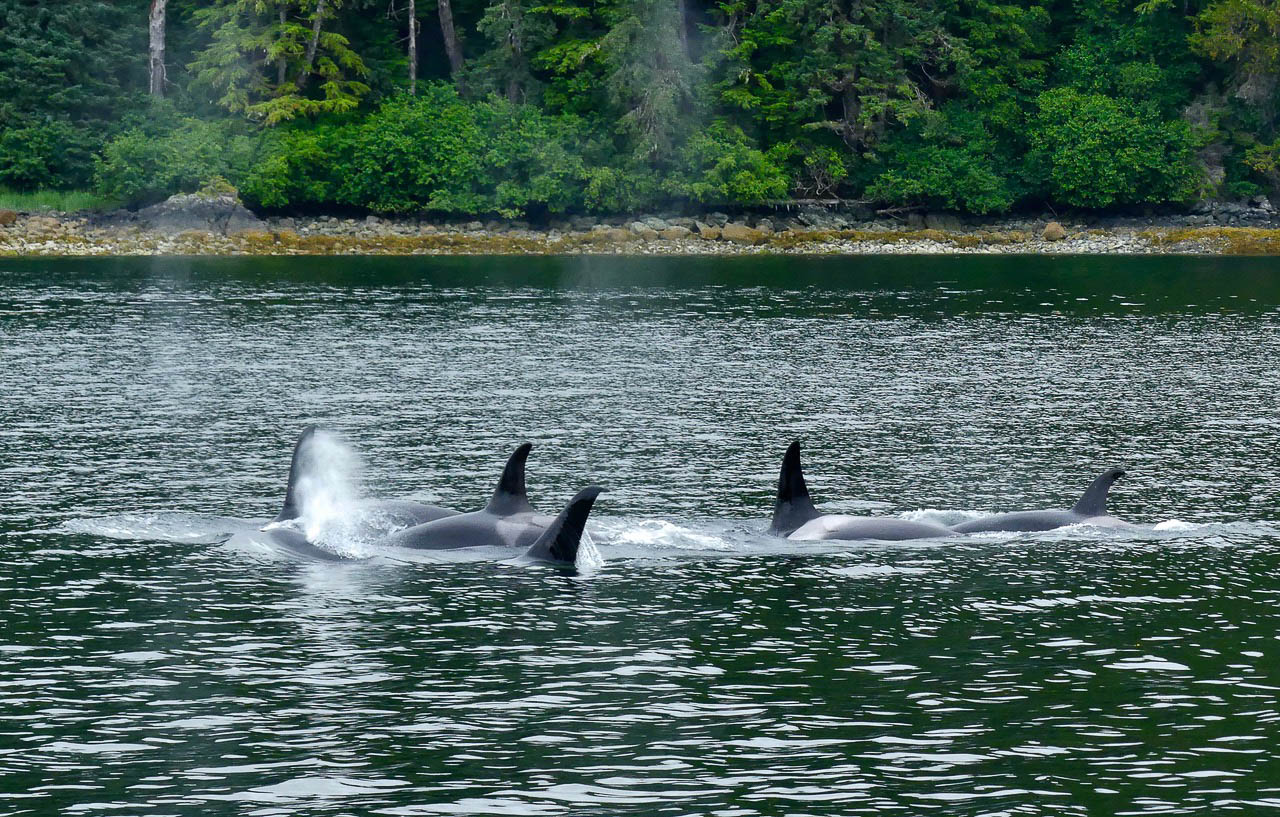
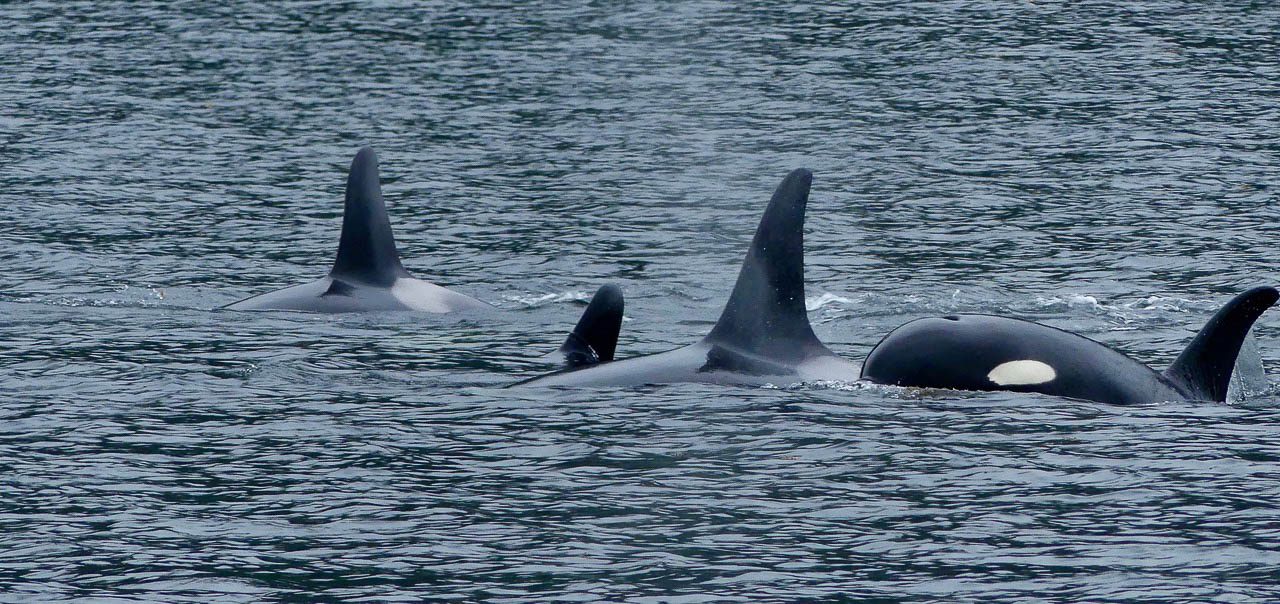

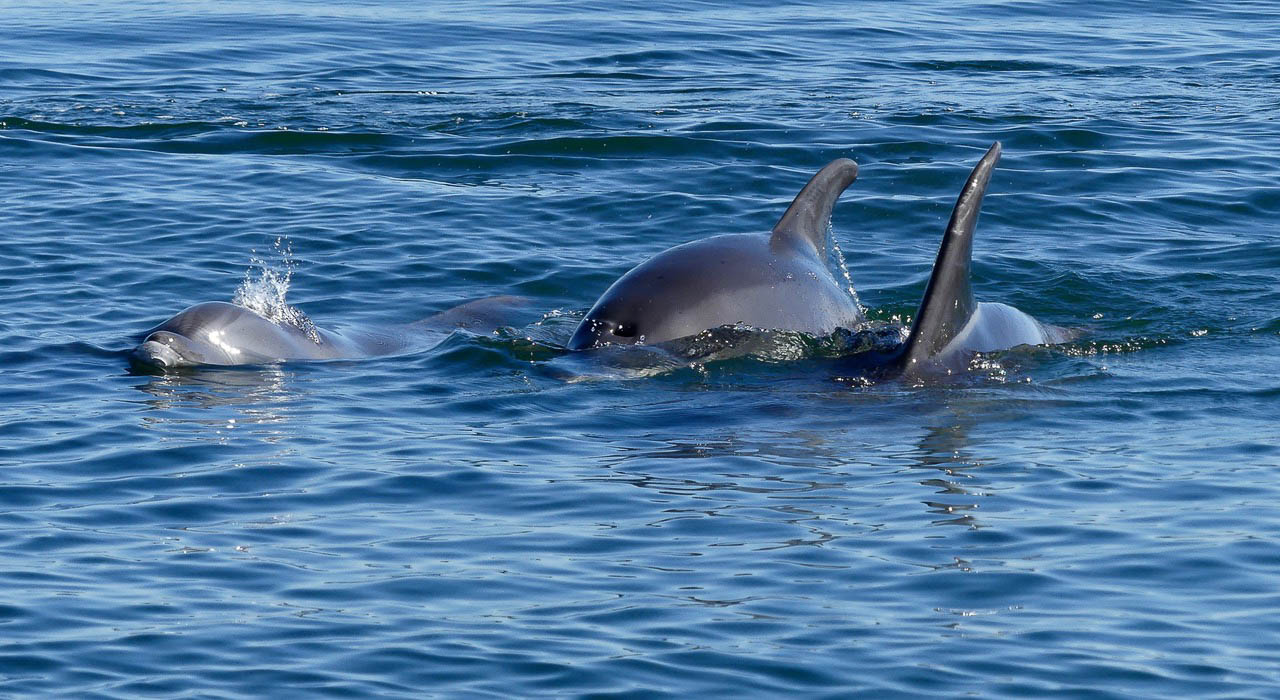
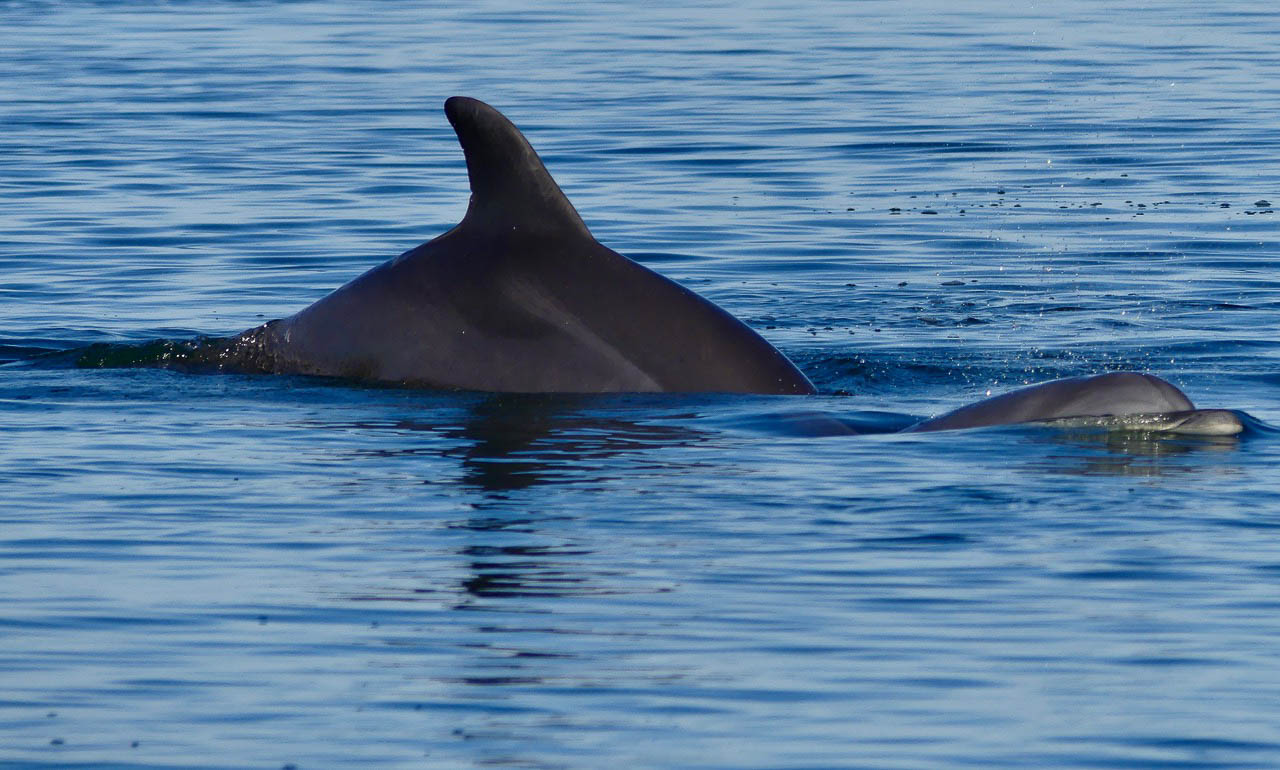
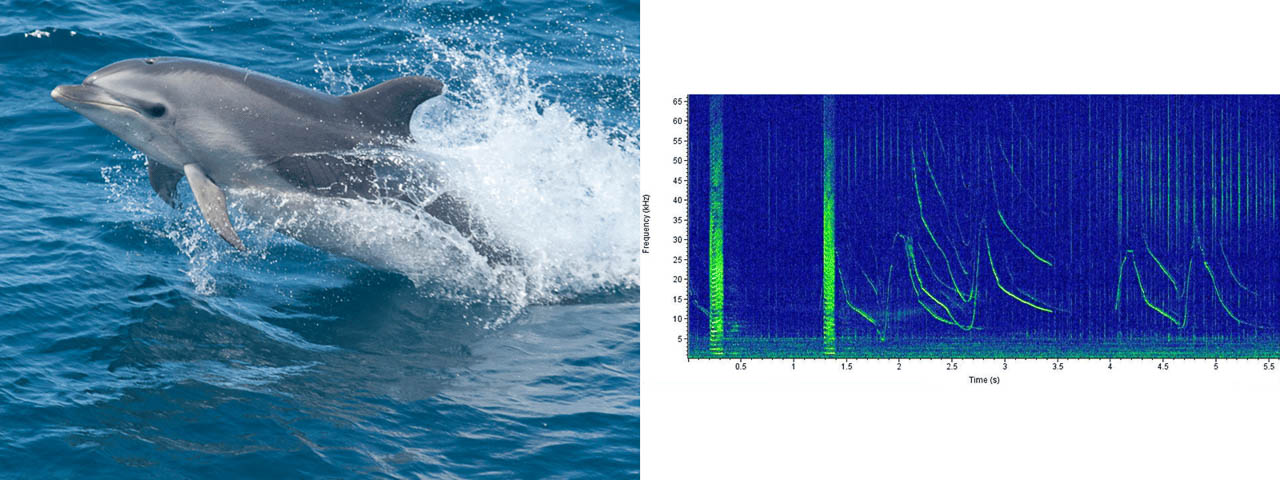
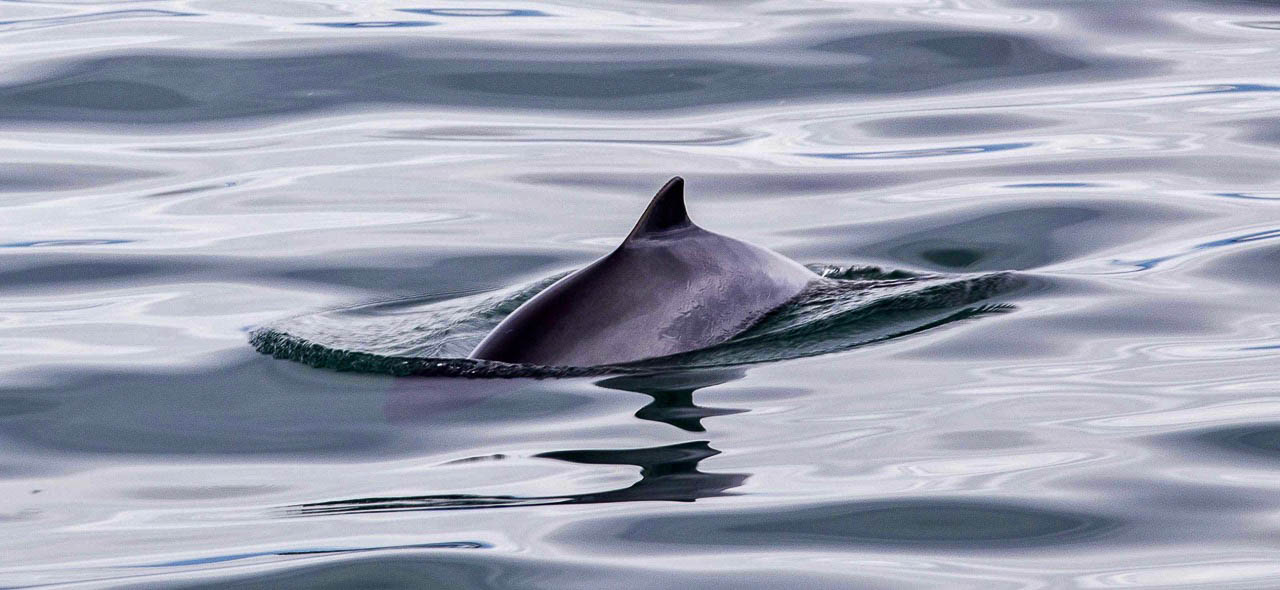
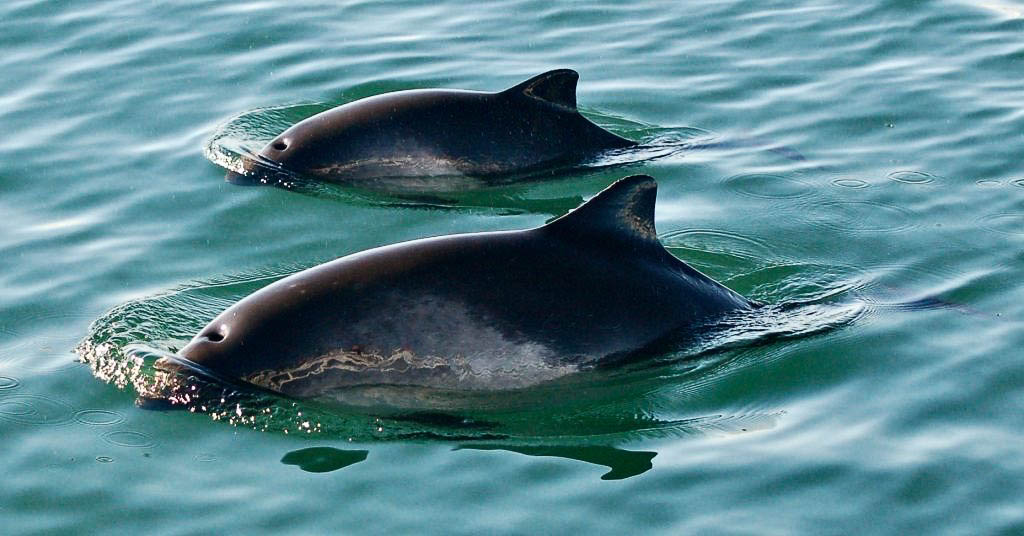
Loved reading this . I have seen Southern Right whales probably sleeping. And I wonder about Commerson’s dolphin.
I went through all my photos from our trip with you and no right whales sleeping. I still remember that Commerson’s dolphin surfing the waves along with our boat captain. We are on Frost Island right now burning slash piles from the tree-climbing arborists. Always on the lookout for killer whales off my cliff. Missing you!